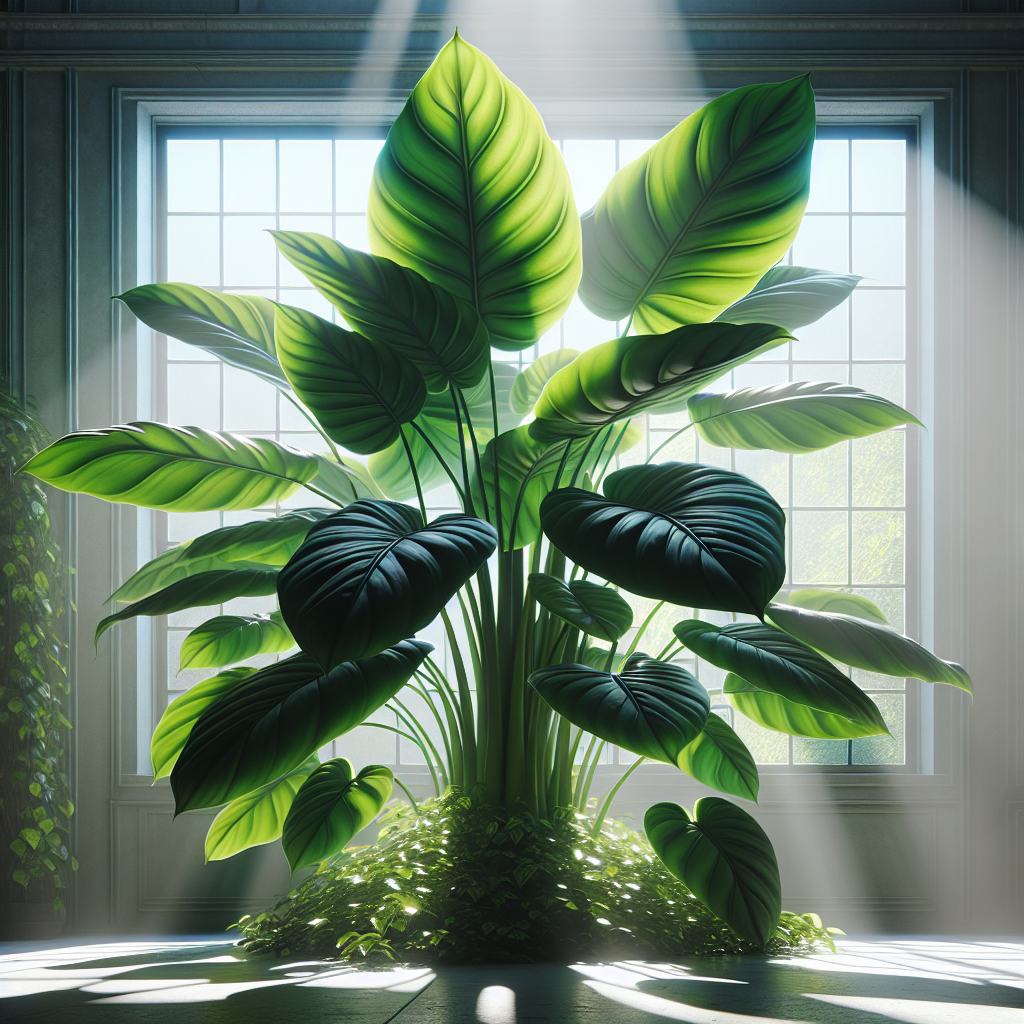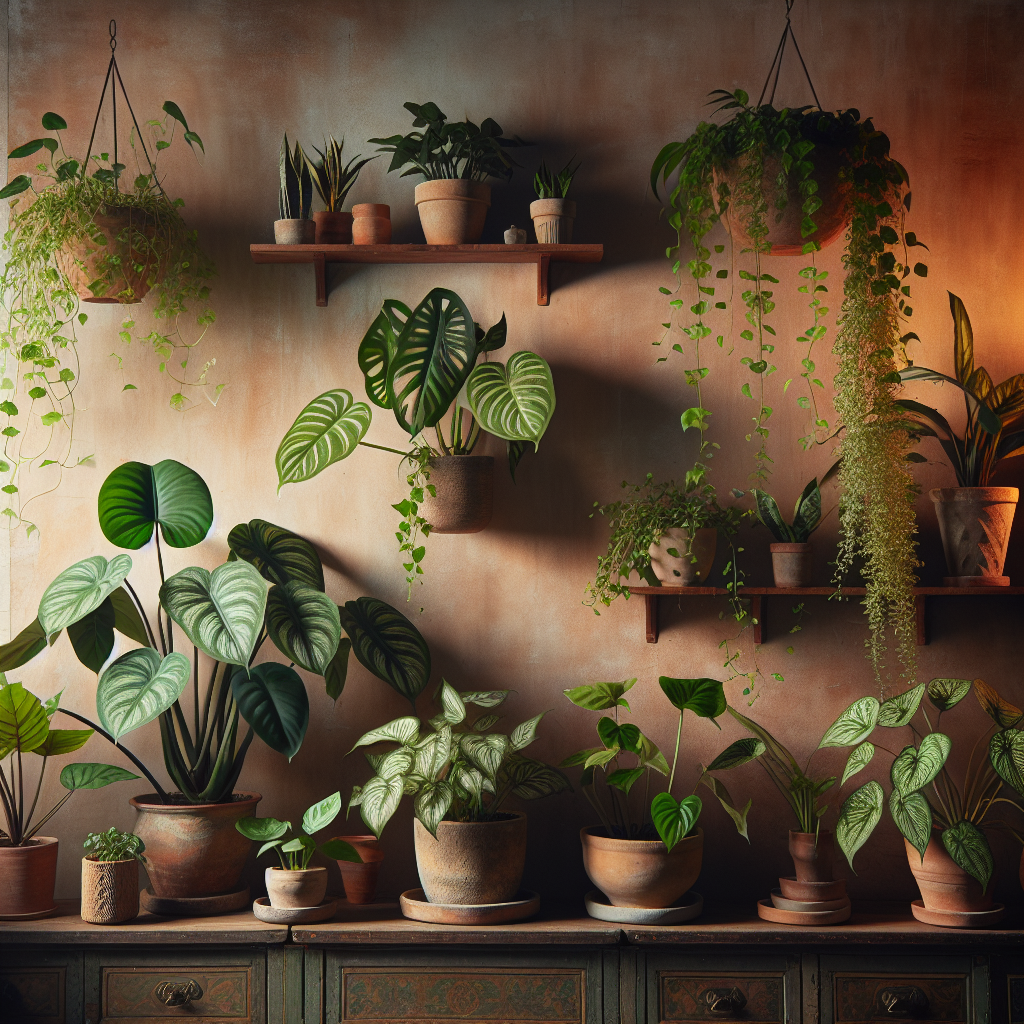Did you know that philodendrons are one of the most popular indoor plants worldwide, with over 450 different species? These leafy wonders thrive in bright, indirect sunlight. Think dappled sunlight filtering through a forest canopy.
Direct sun can scorch their leaves, while dark corners stunt growth. Here’s the cheat sheet:
-
East or West Facing Window: Perfect for most Philodendrons, offering gentle morning or afternoon sun.
-
South Facing Window: Move your plant a few feet back from the window to avoid harsh rays.
-
North Facing Window: Lower light? No problem! Choose a Philodendron variety known for tolerating low light, like the Philodendron Birkin.
Remember, with the right amount of light, your Philodendron will reward you with lush, vibrant foliage for years to come!
In this comprehensive guide, we’ll dive deep into philodendron care at different light levels to help you keep your plant thriving.
Understanding Philodendron Light Requirements
Philodendrons are native to the tropical regions of the Americas, where they grow under the canopy of larger trees, receiving dappled sunlight. This means that philodendrons are naturally adapted to thrive in indirect light when grown indoors.
Most philodendrons do best in bright, indirect light—the kind you’d find near an east- or west-facing window that gets some gentle morning or afternoon sun. Too much direct sunlight can scorch the leaves, while too little light will cause the plant to become leggy and weak.
|
Light Level |
Ideal Placement |
Signs of Too Much Light |
Signs of Too Little Light |
|---|---|---|---|
|
Bright indirect |
Near east/west window |
Scorched/bleached leaves |
Slow growth, small leaves |
|
Medium indirect |
Few feet from window |
Crispy leaf edges |
Long gaps between leaves |
|
Low indirect |
North window, far from window |
Curling leaves, quick soil drying |
Yellowing lower leaves |
Caring for Philodendrons in Low-Light Conditions
If your home doesn’t get a lot of natural light, don’t worry – philodendrons can still thrive! Varieties like the heartleaf philodendron and the silver sword philodendron are especially tolerant of low light conditions.
Some of the best low-light-tolerant philodendrons include:
-
Heartleaf philodendron (Philodendron hederaceum)
-
Brasil philodendron (Philodendron hederaceum ‘Brasil’)
-
Silver sword philodendron (Philodendron hastatum, ‘Silver Sword’)
To care for a philodendron in low light:
-
Place it near a north-facing window or several feet away from an east/west window
-
Rotate the plant every few weeks for even light exposure on all sides
-
Consider using a grow light to supplement natural light if needed
-
Water less frequently, as soil stays moist longer in low light
-
Protect from cold drafts and sudden temperature changes
With proper care, your low-light philodendron can still grow long, trailing vines, albeit at a slower pace than in brighter conditions. Patience is key!
Helping Philodendrons Flourish in Bright, Indirect Light
Most philodendrons thrive best in bright, indirect light. This is the ideal condition for varieties like the philodendron birkin, prince of orange philodendron, and lemon lime philodendron. If you have a sunny window that doesn’t get harsh direct rays, your philodendron will love it there! Some varieties that do especially well in bright, indirect light include:
-
Philodendron birkin
-
Prince of Orange philodendron
-
Lemon-lime philodendron
-
Philodendron Shangri-La
To keep your philodendron happy in bright, indirect light:
-
Place near an east/west window, out of direct sun rays
-
Water when top inch of soil feels dry
-
Fertilize monthly during growing season
-
Prune regularly to control size and shape
-
Wipe leaves occasionally to remove dust
With ideal lighting, your philodendron will reward you with lush, full growth and frequent new leaf unfurling. It’s so satisfying to watch!
Acclimating Philodendrons to Higher Light Levels

While philodendrons generally prefer indirect light, some varieties can gradually adapt to higher light exposure. The split leaf philodendron,(Philodendron bipinnatifidum), for example, can handle some direct sun if introduced slowly. To acclimate your philodendron to higher light:
-
Start by placing it a few feet from a sunny window
-
Gradually move closer to light source over several weeks
-
Watch closely for signs of sun stress (yellowing, scorching)
-
Increase humidity with pebble tray or humidifier
-
Monitor soil moisture, as it dries faster in higher light
Not all philodendrons can adapt to high light, so always research your specific variety before making changes. When in doubt, less light is safer than more.
Identifying Signs of Improper Lighting in Philodendrons
Philodendrons have ways of telling us when their lighting isn’t quite right. Here’s what to look out for: Signs of insufficient light:
-
Slow or stagnant growth
-
Small new leaves
-
Long spaces between leaves on vines
-
Lower leaves turning yellow and dropping
Signs of excessive light:
-
Leaves developing brown, crispy edges
-
Bleached or faded patches on leaves
-
Leaves curling inward
-
The soil is drying out very rapidly
If you notice any of these signs, try adjusting your philodendron’s placement to a brighter or dimmer spot accordingly. It may take some trial and error, but you’ll eventually find that sweet spot where your plant is most happy.
Expert Philodendron Lighting Tips and Insights

We asked some top plant experts to share their best tips for philodendron lighting. Here’s what they had to say: “Philodendrons are one of the best choices for low-light areas in homes. They’re incredibly adaptable! I recommend placing them near north-facing windows or a few feet from east or west windows for best results.”
-
Dr. Leonard Perry, Horticulture Professor Emeritus, University of Vermont
“While philodendrons can tolerate some direct sun, most do best when the light is filtered. Sheer curtains are great for diffusing bright light to a level that philodendrons love.”
-
Jon VanZile, Horticulturist and Author
“If you don’t have much natural light, a good grow light can work wonders for philodendrons. Use full-spectrum bulbs and place the light 6–12 inches from the plant for 12–16 hours per day. It’s the next best thing to a sunny window!”
-
Julie Bawden-Davis, Master Gardener and Author
Philodendron Lighting FAQs
Q: Can philodendrons survive in low light? A: Yes! Many philodendron varieties,, like heartleaf and Brazil, can adapt quite well to lower light conditions. Growth may be a bit slower, but with proper care, the plant can still thrive.
Q: How much light does a philodendron need? A: Most philodendrons grow best in bright, indirect light—near an east/west window out of direct sun or a couple feet back from a south window. Low-light-tolerant varieties can make do with less.
Q: Can philodendrons handle any direct sun? A: In general, philodendrons prefer indirect light. Some varieties may tolerate a little gentle morning sun, but intense afternoon rays can scorch the leaves. It’s best to diffuse strong light with a sheer curtain.
Q: What lighting is best for an office philodendron? An office philodendron will appreciate any natural light it can get from nearby windows. Supplement with a small grow light in darker corners if needed. Avoid placing them directly under harsh artificial lights.
Enjoy your thriving, radiant philodendron!

With the right light and care, philodendrons make a lush and rewarding addition to any indoor plant collection. Whether you have a bright, sunny window or a cozy, low-light corner, there’s a philodendron variety that can adapt and thrive in your space. The key is to watch for those telltale signs that your plant is getting too much or too little light and make adjustments accordingly.
With a little patience and attention, you’ll find that sweet spot where your philodendron positively glows with health and vitality. We hope this guide has shed some light on the wonderful world of philodendron care. By mastering the lighting needs of these classic beauties, you’ll be rewarded with a gorgeous green companion that can grow with you for years to come.
Here’s to many bright and happy days ahead with your flourishing philodendron!
lighting-conditions-for-your-philodendron